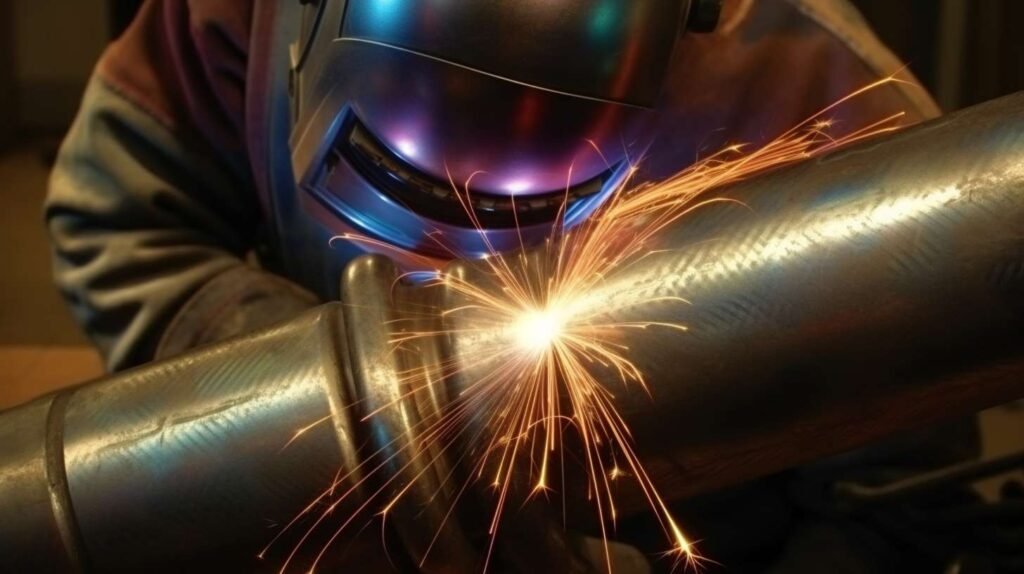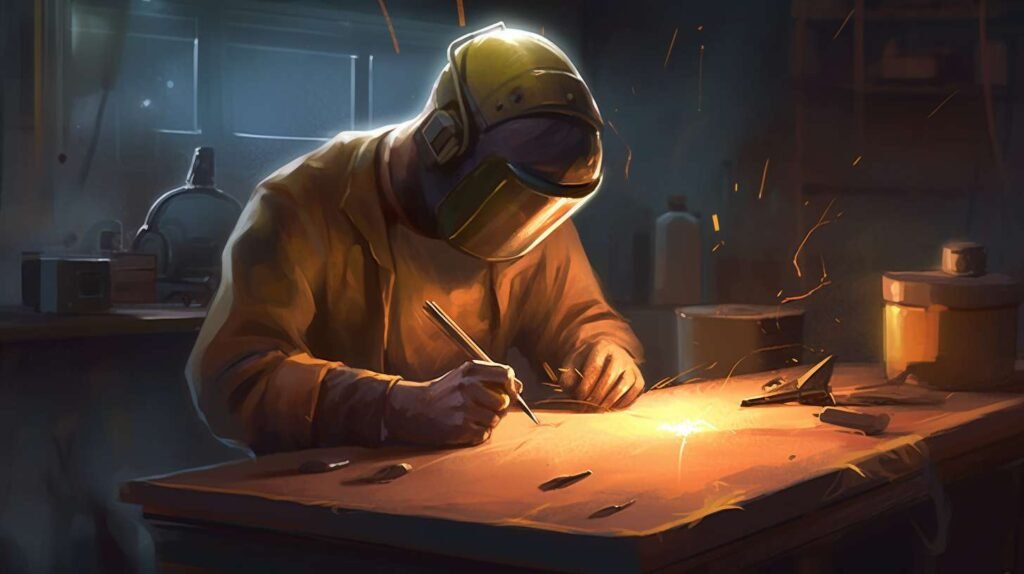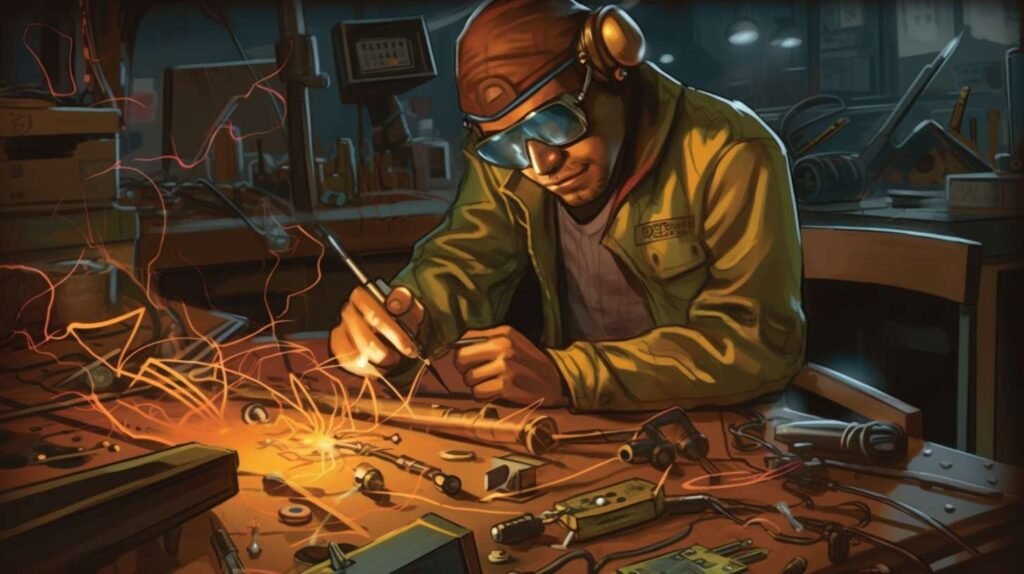Get in touch
Introduction
Tungsten Inert Gas (TIG), more commonly referred to as Gas Tungsten Arc Welding (GTAW), is an exacting welding technique using non-consumable tungsten electrodes that deliver current to an inert gas source such as argon for cooling purposes during welding arc formation and protection/cooling purposes afterward. A brief overview of TIG welding:

Learning Common Mistakes for Beginners
TIG welding beginners need to understand and avoid common TIG welding mistakes to facilitate both skill acquisition and safety improvements. By learning from common errors early, novice TIG welders can speed up their journey toward mastery of this complex craft.
Understanding TIG Welding:
What Is TIG Welding?
An Essential Primer, TIG welding is a highly flexible way of joining metals and can produce clean welds with minimum spatter.
When Should TIG Welding Be Done?
TIG welding is typically employed when accuracy, precision, and aesthetic appearance are of great concern – such as with thin materials, delicate work, or cosmetic welds in industries like automakers, aerospace, or craft producers.
Basic Equipment for TIG Welding
TIG welding requires essential equipment, including a welding machine, tungsten electrode, welding torch, shielding gas, filler rod, and personal protection gear such as gloves, helmets, and protective clothing.
On The Journey Toward Mastery: Common Beginning TIG Welding Mistakes
Mistake 1: Improper Welding Preparation
Importance of Clean Material
Clean material is critical to creating successful TIG welds. Any contaminants like rust, paint, oil, or dirt could compromise a welding joint’s integrity resulting in porosity or inclusions during welding processes.
Avoiding Pre-Weld Setup
Proper pre-weld setup involves securing and configuring welding machine settings before beginning welding operations to ensure optimal weld quality and potential safety risks are avoided. Ignoring this step may result in poor weld quality or potential safety threats compromising weld quality or reducing safety standards.
Mistake 2: Wrong Electrode Selection or Preparation
Different Types and Uses for Electrodes
Electrode types play an essential part in welding processes, with pure tungsten being one of the most widely utilized tungsten electrodes available today, alongside those containing 2 percent thoriated, 2 percent cerium, 1.5% Lanthanated, or Zirconiated coatings being some of the more widely-used options.
Electrode Shaping
It is essential in maintaining welding arc stability and shape: pointed electrodes create narrow, concentrated welds, while those with rounder tips produce more comprehensive, diffused welds.
Mistake 3: Improper Torch Angle and Direction
Correct Torch Angle and Travel Direction
Good torch angles (typically 15-20 degrees) and traveling in the appropriate direction are vital for creating stable arcs with adequate weld penetration.
Improper torch use during welding processes Poor torch angle or direction selection can result in poor weld quality, such as lack of penetration, unstable arcing conditions, and undercutting.
Mistake 4: Misconfiguring Welding Parameters
Understanding Amps, Volts, and Speed
Optimized welding parameters such as Amps, Voltage, and Travel Speed are integral to producing high-quality welds; they affect heat input, arc stability, and, ultimately, the depth and appearance of welds.
Consequences of Inappropriate Settings
Improper settings can result in welding defects like porosity, confusion, and distortion. Too high settings might result in burn-through, while too low settings might produce weak welds.
Mistake 5: Lack of Shielded Gas Coverage
The role of shielding gas in TIG welding
Shielding gas plays a pivotal role in TIG welding. Argon provides excellent arc stability and protection, so this choice is commonly preferred.
How to Achieve Adequate Gas Coverage
For optimal coverage, utilize an adequate gas flow rate (10-20 CFH), cup size, and cup capacity – insufficient gas coverage may lead to unprotected welding seams or electrode contamination, leading to unsafe welds or electrode corrosion.
Mistake 6: Inaccurate Filler Rod Technique
Selecting an Appropriate Filler Rod
Filler rods add material to a weld joint and must be compatible with its base metal. Choosing the correct fillers could result in stronger welds and cracking.
Filler rod feeding technique
The filler rod feeding technique should always be executed smoothly and consistently to achieve consistent bead appearance and optimal fusion results. Incorrect feeding could result in inconsistent bead appearance and fail fusion processes altogether.

Case Study: Real-World Examples of Beginner TIG Welding Mistakes
Case Study 1: Overcoming Insufficient Shielding Gas Coverage
John was an amateur TIG welder who often encountered contaminated welds. With professional assistance, he identified that his gas flow rate was too low. Increasing it and switching up cups helped resolve his issue.
Case Study 2: Addressing Inappropriate: Torch Angle
Susan was new to TIG welding when she encountered difficulties with a lack of penetration in her welds. With feedback from peers and trainers, Susan adjusted the torch angle and travel direction accordingly, dramatically improving weld quality in her welds.

Pro Tips for Avoiding and Correcting Common TIG Welding Mistakes
Tips for Proper Welding Prep
To achieve successful TIG welding results, ensure your workspace and material are clean before beginning welding preparations; furthermore, secure any workpiece to prevent it from moving during welding sessions.
Guidelines for Correct Electrode Selection and Prep
Select an electrode based on your weld requirements, keeping in mind to shape it appropriately – for focused arc welding, use pointed tips, while round ones are better for more comprehensive arc work.
Provide advice for optimal torch angle and direction
Keep the torch angle between 15-20 degrees to achieve consistent penetration of weld bead material and good bead strength. Move in an anticlockwise direction during welding for optimal results.
Select the Appropriate Weld Parameters
Gain an understanding of your welding machine’s settings and their effects before setting any amperage, voltage, or travel speeds according to the requirements for welding your welds.
Ensuring Proper Shielding Gas Coverage
Choose the appropriate gas flow rate and cup size to meet the requirements of your task, regularly checking equipment for leaks.
Mastering Filler Rod Technique
Find an appropriate filler rod to work with the base metal of your weld joint, then practice feeding it smoothly and consistently into it.
Conclusion
Here is an overview of common beginner TIG welding mistakes and solutions; avoiding these may significantly increase your skills and weld quality!
Practice and experimentation are integral to mastering TIG welding, with safety always coming first and seeking advice when in doubt.
FAQs
A. What types of metal can I weld using TIG welding?
TIG welding has many applications; it can join metals such as steel, stainless steel, aluminum, nickel alloys, copper, brass, bronze, and even gold! It offers tremendous versatility!
How can I select an electrode for TIG welding tasks?
Your selection should consider the material you are welding, the power source, and desired arc characteristics. For assistance and advice, consult an American Welding Society guideline professional or refer to their policies.
To ensure adequate shielding gas coverage?
Select a reasonable gas flow rate (10-20CFH), choose a cup size with a sufficient coverage area, and perform regular checks for leaks on equipment.
How can I improve my filler rod technique?
Practice makes perfect; focus on feeding your filler rod smoothly into each weld while making necessary changes as you go along.
Are There Specific Safety Precautions for TIG Welding?
Yes. Always wear appropriate protection such as gloves and a welding helmet when TIG welding; ensure the workspace is well-ventilated; be mindful of electric shock hazards and UV radiation risks; always adhere to manufacturer recommendations when operating the equipment in question; always follow manufacturers’ safety recommendations!
